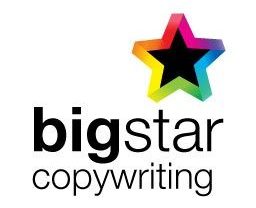Producing unique content that is optimised for SEO is part of a good copywriter’s DNA.
Building a high quality website and sharing this valuable content is critical to the success of a brand’s marketing strategy.
Showing the most relevant results to users is part of a search engine’s reason for being.

When these three elements work in unison the SEO magic can start to happen, as Google determines that the information on the page is worth showing to its users and organic traffic increases.
But sometimes these elements are knocked out of kilter because Google’s Panda algorithm has defined the content on a page as thin content and therefore not worth showing because it is low quality.
The search engine giant’s Panda patrol has been on the lookout for substandard content for almost a decade now. Since 2011, the algorithm has been crawling website pages to make sure results answer user queries and provide the information they are searching for.
In this guide we’ll talk you through what thin content is, how Google warns you, how to audit your website content, how to avoid creating thin content and mitigate the risk of incurring a penalty and how to put things right.
What is thin content?
Understanding what is meant by thin content is straightforward enough. Google simply defines it as content with ‘little or no added value’.
But these five words are packed with ambiguity. The ‘thin’ bit isn’t about the number of words. Web copy or a blog article can run to 2,000 words and still be thin. It’s the quality of the content on the page (which is more than just the copy) and how this adds value and satisfies search intent. This is what Google really cares about. If an algorithm thinks the content is poor quality then it sure will set off alarm bells for humans looking to find useful information.
How do you know if your content is thin?
When Google detects low quality content, someone will review the page and if the reviewer determines the site is not compliant with its guidelines, Google will issue a manual action warning for the business to remedy this.
What type of content are we talking about?
- Shallow articles that don’t really add depth to a topic or they are stuffed with keywords to try to rank higher
- Copy littered with spelling mistakes and poor grammar
- Pages full of photos or adverts
- Intentional duplicate content or scraped content
- Affiliate content – this is where websites that refer customers to purchase on another shopping site use product descriptions that have been copied from the merchant without adding an extra insight or value.
- Thin syndication – whereby somebody grabs a low quality article from a free article syndication site
- Content created by machines
- Doorway pages – multiple pages that are used for the same purpose to drive traffic to essentially the same destination – they are published with only a keyword change or a very subtle difference
Here’s some really useful context on all of this from Google:
Does thin content like this really hurt your search ranking?
You bet. This matters because Panda is now one of Google’s core ranking algorithms.
How else?

Pages and posts with useful content will generate more links. Backlinks are still the number #1 ranking factor according to Authority Hacker. If people don’t find anything worth linking back to when they see what’s on the page – it will not rank as highly and organic traffic might fall. They may not even bother to come back again.
Google will also factor in bounce rates – the percentage of users that click away from a website after only viewing one page. If a user bounces back to the search results to try another site then Google will also take this into account.
How can you audit content?
When was the last time you ran an audit to check that the quality of the content on your website? If this isn’t something you already check for, there are tools out there to help you do this.
- Try a free tool like Screaming Frog, a site crawler that helps you find low quality content pages and duplicated elements on your site. You’ll need to roll up your sleeves to analyse the data on titles and URLs to find duplicate content and word counts to find pages and posts that are too light.
- Google Analytics will give you basic data on your website traffic which helps you work out your most popular pages and articles (and obviously least popular), bounce rates and dwell time etc.
- Free tools like Copyscape will help you find duplicated content that has been scraped by a third-party website or content that has been plagiarised on your site.
Reading content yourself

All content on a website should make for a great user experience. This goes without saying. So you’ll also need to invest the time to read through content yourself.to check that it is high quality and still relevant to the buyer’s journey as it is now.
If you are pinning your flag to the SEO mast, you will need to revisit copy to make sure it is optimised. You’ll need to check for target keywords and topical relevancy for example. This may sound like a long, laborious job but it will be worth the effort to avoid any Google penalties.
How do you avoid thin content in the first place?
The answer here is simple. If you produce unique, original content that satisfies search intent there’s no risk of a Panda penalty. SEO plugins like Yoast will help you avoid publishing thin content. The tool will analyse the content you want to publish and check for word count, readability, keyword density and keyword repetition amongst a whole raft of other neat SEO features.
How to fix thin content
To remedy thin content you have two options:
- Improve the content so it provides more value
- Remove (delete) the article or page
Option 1: Improving what you’ve already got (5 steps to success)
Repurpose low quality copy
If a page or post doesn’t cut it in the quality stakes then this doesn’t necessarily mean starting again with a complete re-write. You can update or repurpose the copy to improve its relevancy and usefulness. As we just mentioned, it’s important to revisit and refresh keywords too.
If you are deleting a page and replacing it be sure to use a 301 redirect to the new page.
Expand the word count
In a recent post we talked about how there are no hard and fast rules about word counts for a page or post. So we went with Forbes on this, which put the figure at 300 words minimum. Yoast also recommends 300 words or over. So, if your copy is low on words you can simply expand. This will also help you to improve topic relevancy and add more depth to what you want to say.
Use introductory text
Google doesn’t smile favourably on pages that are just photos. If you are a creative business like a photography studio then use introductory text on image pages to tell visitors more about your story, services and successes to create more interest and context when someone lands on the page.
Product descriptions
The same principle above applies to ecommerce sites. Online retailers also need to think about how they make product descriptions unique. As we discussed at the beginning, Google can see product descriptions that are just copied and pasted from the manufacturer as thin content. If you sell lots of products then prioritise your best sellers. Investing in a professional product description writing service can pay dividends.
Avoid duplicate content / doorway pages
If you have pages that are the same, or there is just a slight difference, then you’ll need to make each page unique or bring everything together as one page. For example, if your estate agency has offices in London, Brighton, Manchester, Birmingham etc and you simply create a page for each city and use the same content – the only thing you change is the city name – then this is thin content.
Making each page unique is no bad thing. The housing markets in each city will be different, house buyers will have different needs and wants. Tailoring content and adding a local flavour and interest is more personal than generic copy that could be written about anywhere.
Option 2: Removing thin or substandard pages and posts
Google doesn’t really recommend that you remove pages – just improve the quality. Obviously there will instances when a page or post just has to go and you should remove them. If these pages have valuable inbound links then use a 301 redirect to a similar page with better quality content.
To sum up
All content that you produce for your website should be high quality and meet the information needs of your readers and customers. If this has been your mantra from the get go then thin content shouldn’t be an issue. But, don’t rest on your laurels. All businesses should be alert the perils of a Panda penalty for thin content. Google will alert you when it detects a page that is poor quality so you can fix things.
However, it’s also just good practice to audit the content on your website, at least once a year, and revisit old articles to see if they are still relevant to your customers’ journey and optimised for SEO. It makes for a better user experience and when you get this right the SEO magic can start to happen.
We can transform your thin content into something Google, and your readers, love. Drop us a line and find out how we can help
